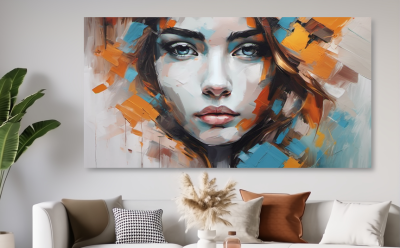Painting, an ancient and enduring form of artistic expression, schilderij transcends cultures and epochs. From the primitive cave paintings of Lascaux to the cutting-edge digital canvases of today, painting has always been a powerful medium for conveying human experience and imagination.
Origins and Evolution
The story of painting begins with prehistoric cave art, where early humans used natural pigments to create images of animals, hunters, and abstract symbols. These early works were more than mere decoration; they served as a means of communication and ritualistic expression, revealing the spiritual and social lives of their creators.
As civilizations advanced, so did painting techniques. Ancient Egyptians developed a method of painting on plastered walls, creating vibrant, detailed depictions of their gods and daily life. In ancient Greece, painting evolved to include the use of oil-based pigments, allowing for greater depth and realism. This period saw the rise of iconic works like the frescoes of Pompeii, which capture the sophistication and diversity of Roman life.
The Renaissance marked a pivotal moment in the history of painting. Artists such as Leonardo da Vinci, Michelangelo, and Raphael pushed the boundaries of technique and perspective, laying the groundwork for modern art. Their mastery of light, shadow, and anatomical accuracy set new standards for visual representation and influenced countless generations of artists.
Techniques and Styles
Throughout history, painting has been characterized by a variety of techniques and styles, each reflecting the artistic sensibilities of its time. The use of oil paints, for instance, revolutionized the art world by allowing for more detailed and layered compositions. The Dutch masters, including Rembrandt and Vermeer, are renowned for their skillful use of light and shadow, creating works that are both intimate and dramatic.
The Impressionist movement of the late 19th century brought a new approach to painting, focusing on the effects of light and color rather than precise detail. Artists like Claude Monet and Edgar Degas sought to capture fleeting moments and the transient nature of experience, challenging traditional notions of form and representation.
The 20th century introduced a plethora of new styles and movements, from Cubism and Surrealism to Abstract Expressionism. Pablo Picasso and Salvador Dalí, among others, pushed the boundaries of what painting could be, exploring new ways to represent reality and the unconscious mind. Meanwhile, the rise of digital technology has led to the creation of virtual and interactive art, expanding the possibilities of what painting can achieve.
The Contemporary Scene
Today, painting continues to evolve, reflecting the complexities of modern life and the diverse perspectives of contemporary artists. Traditional methods coexist with innovative techniques, and the boundaries between different forms of art are increasingly blurred. Artists are experimenting with new materials, incorporating digital elements, and addressing pressing social and political issues through their work.
Contemporary painting often explores themes of identity, globalization, and environmental change, challenging viewers to reconsider their relationship with the world. The medium remains a dynamic and relevant form of expression, capable of capturing the essence of human experience in ways both profound and playful.
Conclusion
Painting, in all its forms and variations, remains a testament to human creativity and expression. From the earliest cave paintings to the latest digital creations, this art form continues to inspire and engage, offering a window into the past and a reflection of the present. Whether through the meticulous techniques of the old masters or the experimental approaches of contemporary artists, painting endures as a vital and evolving medium, forever capturing the essence of our shared human experience.

